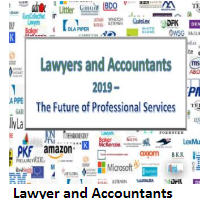Timothy B. Corcoran Principal, Corcoran
Consulting Group
Timothy B. Corcoran is the principal of Corcoran Consulting Group, LLC and served as the 2014 president of the international Legal Marketing Association. A former CEO, he specializes in helping law firm and law department leaders adapt and profit during a time of great change. He authors Corcoran’s Business of Law blog and can be reached at +1.609.557.7311 and tim@corcoranconsultinggroup.com.
_____________________________________
Every successful business must periodically review and adjust its service offerings in light of changing market dynamics. New entrants pose threats to entrenched players; emerging technology automates at a low cost what was once a lucrative manual undertaking; and leaders must engage in continuous game theory, acting and reacting to changing circumstances and competitors’ moves. In the global legal marketplace, rapid changes have increased the pressure on law firms and law departments alike to examine what and how they deliver legal services to clients, and leaders of these organizations must step up their game.
Redefining Strategy
For
law firm leaders, there was little need to engage in an organized process of
internal advocacy, aligning the firm’s capital investments toward the
practices, markets, and resources that generated the best return, for all
practices generated increasing revenue year after year. Indeed, many firms have
only recently begun to calculate profit margin at the practice or matter level,
so it was often impossible or highly impractical to measure performance in any
way other than top line revenue growth. Strategy plans, therefore, focused
primarily on tactics to raise the firm’s visibility in target markets,
employing vague financial metrics to measure performance, with minimal
accountability for the partners expected to deliver results. After all, so long
as aggregate revenues exceeded aggregate costs by a comfortable and increasing
margin each year, the details of how firms reached their targets were less
critical.
Tactics
also ruled the day for many in-house law departments, as there was a prevailing
expectation that legal services are, and always will be, a cost center rather
than a profit center. As a service organization to its internal corporate
clients, the law department’s reactive posture to whatever new strategy the
corporate executives dreamed up left its leaders in a perpetual state of
keeping up — hardly the best position from which to proactively organize and reexamine
the role of the legal function.
The
global economic recession that began in 2008 demonstrated beyond a shadow of
doubt that legal services organizations are subject to the same economic
realities of other businesses, and with declining demand — or, in the face of
emerging substitutes and alternatives for the provision of legal services, at
least declining demand for the old ways and old prices — law firms and law
department leaders have finally recognized that engaging in more formal
strategic planning is not just a good idea, it’s also most likely the
difference between a thriving organization and one that is facing an inevitable
decline.
Law firm leaders must account for both internal and external factors: not only what practices we want to offer, but what services are the market willing to buy, and at what price? They should no longer be deluded by the notion that “all revenue is good revenue.” Profitable revenue streams take precedence and deserve, and should consume, a greater portion of the firm’s resources and investment. Law department leaders, in turn, have come to realize that senior corporate leadership simply do not find credible that legal costs increase every year, in all areas, at a rate greater than other corporate costs, and cannot be predicted with any confidence, and furthermore that reducing legal spend will inevitably expose the business to greater risk. So, with these realizations, what are they doing about it?
Asking for Help
Perhaps
the most notable change in post-recession legal organizations is the increasing
influence of business practices and trained business managers to help guide
strategy and operations. To be sure, many law firms and law departments have
long employed experienced and sophisticated executives, some with long
experience in law firms and others from industry. But by and large, these
voices were muted, as those tasked with practicing law have always been
afforded the benefit of the doubt when building an infrastructure to support
their needs.
Second-guessing
a partner’s demand for resources, or marketing tactics, or staffing
preferences, or use (or avoidance) of technology tools, or approach to pricing
and discounting, was deemed to interfere with and potentially impair the
quality delivery of legal services and expose the law firm to client
dissatisfaction at the very least. In recent years, a U.S. state bar ethics
panel ruled,2 in so many words, that
even allowing a business person to have a “chief” title implies that
businesspeople have undue influence over a law firm’s practices, creating an
ethical breach and a conflict between good business sense and the practice of
law.
Leaders
have discovered, however, that good business sense prevails. In law departments,
there is a rise of legal operations executives tasked both with managing the
day-to-day activities of the legal function and with finding ways to improve
quality, throughput, and responsiveness while decreasing costs. Law firms have
sought highly-experienced corporate executives to lead practices (sitting
alongside the practice group chair who is, as often as not, deemed worthy of
the role based on the ability to generate business rather than any observable
capabilities in running a complex business) and the sophistication of those in
longtime C-level roles, e.g., the CFO, CMO, or CIO, continues to increase as
the duties of these functional siloes intersect at an increasing pace. One of the
fastest growing roles in large law firms in recent years is the pricing
director, which is often combined with supervision over project management and
process improvement. However, law firm leaders are slowly but steadily
recognizing that these are distinct business functions requiring unique skill
sets.
Both law firm chairs and chief legal officers of law departments are increasingly turning to consultants to help them navigate the organizational and market changes. Just as some leaders who became rock stars and thrived in the earlier era are now embattled or have stepped off the stage, there are some notable consultants whose expertise was also attuned to a bygone era. Many, however, have long been encouraging firm management to adapt to the new economy, and can provide expertise gained from experience in industry or in other professional services fields and this expertise is in great demand. The role of a consultant may vary. In one organization, the management has a clear growth vision but need help selling it internally, and an objective and respected outside voice is additive. In another, the executive committee may have good intentions, but has a limited understanding of how to conduct a rigorous strategic review or initiate enterprise-wide multiyear business process improvement efforts, so they seek specific subject matter expertise. Still others may seek a consigliere, as trading ideas with a respected and independent peer can offer more benefits with fewer downsides than revealing confidences and asking for help from one’s law firm partners or law department senior staff.
Change Management
A
principal role of a consultant is to help the organization embrace change.
There are plenty of good ideas, but many organizations falter upon execution
because of a poorly designed process to engage stakeholders, or they fail to
factor in the how when devising the why and the what.
The
chief legal officer for a brand name multinational corporation recently
solicited proposals for a consultant to assist her in reengineering the global
legal function. During the open Q&A session with prospective consultants,
she shared that while her deputies were aware of the initiative and had offered
their unconditional support, none would be involved in the process beyond
providing access to financial information and easing access to interview
internal stakeholders. Furthermore, her internal clients in business management
had no idea that this effort was under consideration, and their participation
was deemed unnecessary to produce a quality recommendation.
We
advised that the project was unlikely to achieve glorious success because key
stakeholders, namely the deputies whose organizations would be most impacted by
any reorganization recommendation, were not part of the process and would most
likely, if not intentionally, obfuscate any investigation that didn’t confirm
the sensibility of keeping their empires intact. Furthermore, the internal business
clients, whose service posture would be disrupted if a new law department
organizational chart were to be sprung upon them, very likely have critical
insights that could inform the analysis. She was incredulous, believing that
the point of hiring outside consultants was to avoid distracting internal
stakeholders.
An independent consultant can ask questions, interview stakeholders, conduct objective and unbiased research, and make recommendations without undue political influence. The best outcomes, however, result from a participatory and cross-functional process in which stakeholders from across the organization are involved; when there is a clear communication plan about the effort underway that helps those not involved in the details stay abreast of progress; and when those who are impacted have the opportunity to see both how decisions are made and what data supports the various conclusions. This is often contrary to the paternalistic mindset employed by many managers, where information is closely guarded. The rank and file, perhaps via designated representatives, can and should have the opportunity to offer insights into the day-to-day operations of an organization, and to illuminate and often dispel beliefs leaders have about “how the sausage is made”; this creates more informed analysis and acceptance on implementation.
Building a Data-Driven Culture
Good business
leaders and consultants rely on objective data to inform decisions. Even when
data are limited, such as understanding how a competitor’s cost structure
impacts its pricing strategy, there is still a framework for plugging in
whatever data are available and assigning a corresponding confidence level.
Many legal organizations lack data. Law departments are beginning to understand
the power of analyzing years of electronic billing records to identify quality
and performance metrics and to distinguish between reliable and unreliable
service providers. Law firms who have long treated “knowledge management” as a
document archiving exercise now embrace cost accounting and experience tracking
in order to better staff and price future services. Even so, data often still
take a backseat in the strategic planning decision framework.
In a
recent strategic planning effort for a mid-sized U.S. law firm, there was
strong resistance to including any voices other than management committee
members and top rainmakers. The partners felt that sharing any financial data,
revealing any organizational “dirty laundry,” or even exposing strategic
deliberations to anyone outside this group would likely generate disastrous
consequences. These partners had yet to learn what corporate strategists have
long known: Insulating those who devise strategy will create an echo chamber.
Strong opinions will override sound analysis; political considerations will gain
undue influence; confirmation bias will lead to analysis that supports the
status quo and minimizes negative input; and, not surprisingly, few decisions will
be made that negatively impact the leaders devising the strategy in any
material way.
In a
law firm this challenge is particularly acute: Partners are also owners, and
they feel they have a right to assert their voice in business strategy, so a
common result is that partner preference prevails over sound business judgment.
The largest waste of time in a law firm strategic planning process is to allow
partners to endlessly debate esoteric concepts when neither side has supporting
data, and no matter what’s decided the partners have veto power if they don’t
like it. The single greatest approach to overcoming uninformed partner input is
to have relevant data on hand that supports a conclusion.
To be
clear, partners may make decisions that are not in their economic
self-interest, and many do, but these can and should be conscious decisions.
For example, many law firms continue to offer practices that contribute little
to the firm’s bottom line and provide minimal cross-sell or upsell potential.
While allocating capital to a different practice may generate a better return,
there’s nothing wrong with maintaining a legacy practice that is closely tied
to a firm’s history or that occupies a longtime partner who is nearing
retirement. Adopting sound business practices and relying on data to inform
decisions does not mean that all
decisions must be based solely on short-term financial benefits.
It is often the role of the consultant to advise leaders when their data infrastructure is lacking… and it often is. Still, a good strategic planning framework can help both to analyze external and internal forces and to generate reasonably informed outcomes. But nothing replaces building a data-driven culture where information, and the processes and tools necessary to capture the information, are deemed critical to the organization’s success rather than costly distractions.
Revisiting Incentives
The
challenge of aligning and realigning incentives is greater in law firms than in
law departments. A partner who has learned over time how to maximize the firm’s
compensation plan to generate a healthy income year after year is generally
resistant to any change, even one that on paper can be demonstrated to be more
lucrative for the partner. The inherent risk that a change might reduce a
partner’s take, even balanced against the corresponding potential to generate
greater rewards, more often than not leads to stasis. A good consultant
understands that when an organization’s compensation plan is in conflict with
the firm strategy, the compensation plan is
the firm strategy. Devising a strategy requires an examination of current and
potential incentives to determine where there is alignment and where there is
conflict. Conflict must be resolved, and this can be done most effectively by
demonstrating with reliable data the positive outcomes associated with new
behaviors.
Law department incentives are also in play, however. In corporations where legal costs are allocated to the business units, the executives in charge care deeply about the management of legal spend. When these internal business clients participate in some variation of a 360-degree performance evaluation of in-house counsel, their satisfaction influences in-house lawyer compensation. It’s now a fairly common factor in general counsel compensation that adherence to a budget has financial benefits or consequences. When devising a strategy to better serve internal clients, aligning the incentives of those managing the effort will help maintain focus.
Sustainability
As
with any strategic plan, a law firm or law department must revisit it
periodically. However, while tactics will surely change, and market dynamics
may change the emphasis and direction of investments over time, the fundamental
and underlying strategy rarely lurches dramatically in every three- to
five-year cycle. A good consultant can help minimize the impact of short-term
concerns and maintain the focus on matching the organization’s long-term
capabilities to the relevant sustainable market opportunities. The secret to
effective strategic planning is not all that elusive. It requires a rigorous
process, data to guide decisions, wide stakeholder participation to help pave
the way for implementation, and thorough communication to ensure transparency.
A seasoned consultant can help legal organization leaders adopt this approach
and can contribute to the analysis and recommendations. Done well, the impact
of a strategic plan will be meaningful and material. Done poorly, however,
strategic planning can be a costly distraction.
2 Opinion 642, TEXAS CENTER FOR LEGAL ETHICS, http://legalethicstexas.com/Ethics-Resources/Opinions/Opinion-642.aspx.

 Software
Software Law
Law Legal
Legal






